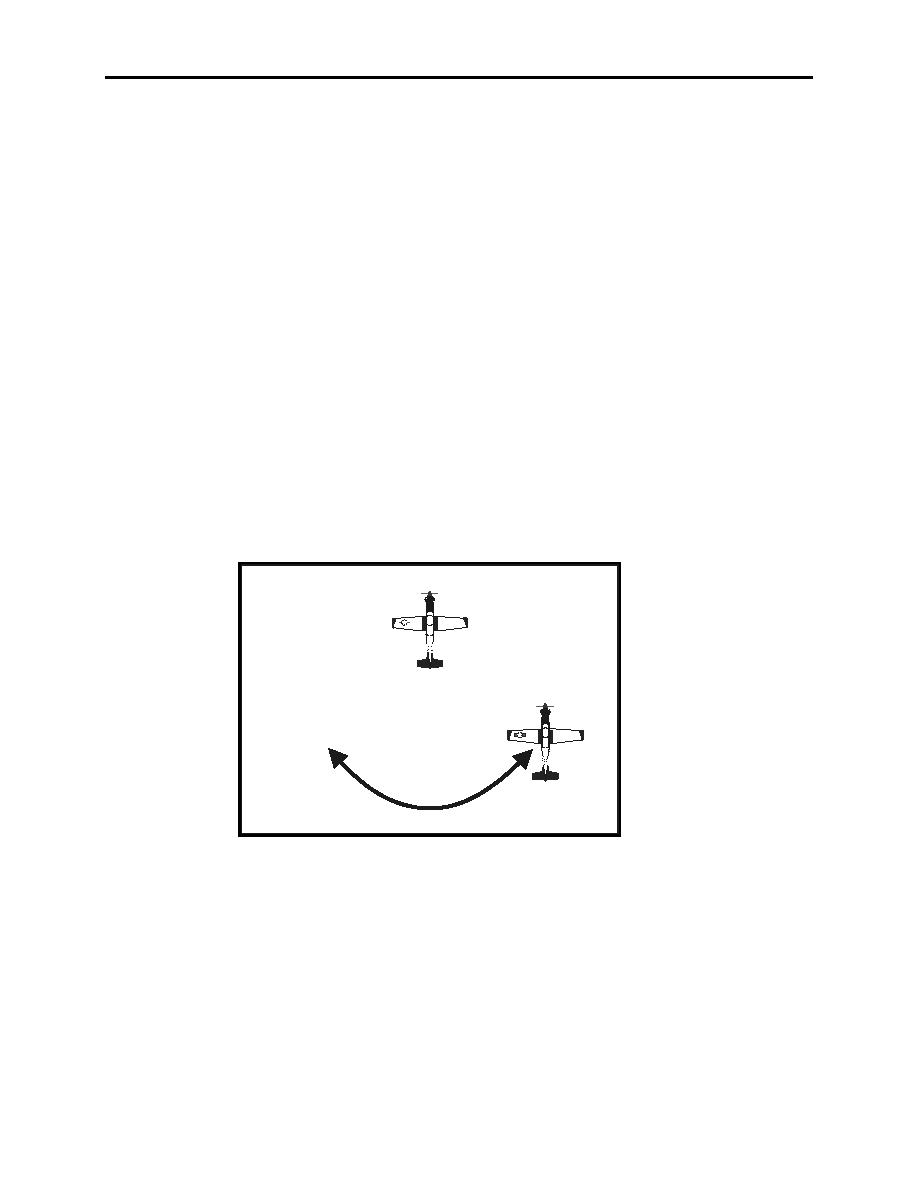 |
|||
|
|
|||
|
|
|||
| ||||||||||
|
|  CHAPTER FOUR
T-6A FORMATION
This clearance back inside the turn to rendezvous is necessary because there may be more than
one aircraft joining on the lead. If the Wingman crosses under the Lead without proper
clearance, he runs the risk of flying directly in the path of rendezvousing aircraft.
4.
Safety
a.
Never lose sight of the Lead.
b.
Know and call for the underrun procedure when applicable.
406. CRUISE POSITION
1.
General Cruise. Section cruise will provide the formation with maneuverability and
lookout doctrine not available in parade work. The Lead, while cruising, is not restricted to 60
AOB and the Wingman is not confined to a firm parade position on one side of Lead.
2. Cruise Position. The cruise position (Figure 4-11) is on either side of the 60 bearing
behind Lead with approximately 20 feet of stepdown and three to six plane widths between
aircraft. The cruise position will be utilized to the maximum extent possible, based on the
advantages listed above (i.e., in transit to and from the established working area, on IFR
downwind etc.).
Figure 4-11 Cruise Position
407. TAIL CHASE EXERCISE
1. Tail Chase Exercise. The Lead should set power at 10% less than max torque and pass the
tail chase signal. The tail chase signal is similar to the crossunder signal except that the
forefinger and thumb are extended into a "cocked pistol". The Wingman will take an extended
cruise position, approximately 500 feet from the Lead. The Lead will maneuver through turns,
gradually increasing the AOB and pitch while working into wingovers, barrel rolls, loops, etc.
The students will learn, through the instructors' demonstration of lead/lag and pure pursuit, the
4-10 SECTION PARADE
|
|
Privacy Statement - Press Release - Copyright Information. - Contact Us |